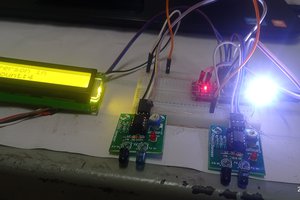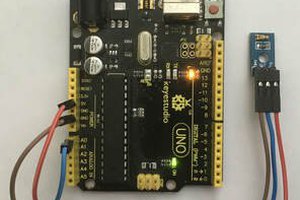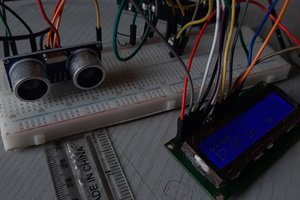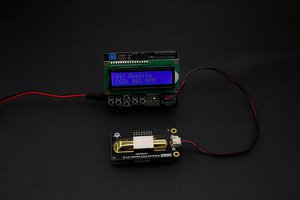In the area of electrical projects, there is a specific area that develops lighting projects. This area is called Luminotécnica.
Once the lighting is dimensioned, it is necessary to execute the project and then carry out the luminosity measurement to check if it meets the criteria established in the lighting project.
To perform this measurement, a device called Luximetro is used.
Therefore, in this article, you will learn how to develop a Luximetro using the BH 1750 light sensor with the Arduino Nano and a 16x2 LCD display.
Therefore, through this article you will learn:
- 1 - Perform the circuit assembly on the protoboard;
- 2 - Understand how the BH1750 sensor works;
- 3 - Perform the communication of the Arduino Nano / Arduino Nano the BH1750 light sensor;
- 4 - Display of measured values on the LCD display;
- 5 - Develop your NEXTPCB Printed Circuit Board.
The project will be developed in partner with NEXTPCB and you can access the printed circuit board files and earn 10 FREE PCBs through the link: NEXTPCB Printed Circuit Board.
Now, we will start the complete presentation of the development of the Luximetro project with BH1750 sensor.
Developing the Luximetro Project with the BH 1750 Sensor
As previously mentioned, the project consists of creating a system to perform the luminosity measurement using the BH1750 luminosity sensor.
The BH1750 I2C Brightness Sensor
With the BH1750 light sensor, it is possible to measure the light intensity in the range from 1 to 65, 535 Lux.
This sensor has I2C communication, which facilitates communication with microcontrollers, since it uses only 2 pins, an SDA data pin (serial data) and SCL clock pin (serial clock line), in addition to the VCC and GND power pins.
I2C communication uses the concept of master/slave, in which the microcontroller is the master and the peripherals as sensors, displays are the slaves.
The microcontroller is responsible for sending the clock signal to the I2C bus so that data is sent by the peripheral.
The SDA pin is a pin that has bidirectional communication, because sometimes it sends information, sometimes it can receive information.
The advantage of using I2C communication is that it is possible to connect several devices on a single bus to read and send information, each device occupies a different address on the I2C bus.
The sensor its the following characteristics:
- Power Supply of 3.3V ~ 5V;
- Digital Output Signal;
- Measuring range of 1 lux ~ 65535 lux
The sensor image is presented below.

Figure 1 - BH1750 Sensor Pins.
In figure 2 we have the schematic circuit with the necessary connections for assembling the project.

Figure 2 - Schematic circuit with the connections of the BH1750 sensor and the LCD display to the Arduino nano.
After assembling the electronic circuit, we will program the Arduino Nano to communicate with the sensor and display the values on the LCD display.
Development of the Luxmeter Programming
To program the Arduino Nano to communicate with the BH1750 sensor, we will need the Wire.h library (performs I2C communication) and the BH1750 library.
// Bibliotecas #include <Wire.h> #include <BH1750.h> #include <LiquidCrystal_I2C.h> LiquidCrystal_I2C lcd (0x27,2,1,0,4,5,6,7,3,POSITIVE);
// definiçao de objeto BH1750 sensor; void setup() { // velocidade de comunicação serial Serial.begin(9600); Wire.begin(); sensor.begin(); Serial.println(" Monitoramento de luminosidade sensor BH1750 "); lcd.begin(16,2); lcd.setBacklight(HIGH); lcd.setCursor(2,0); lcd.print("LUXIMETRO");
}
void loop() { // variavel para leitura da luminosidade unsigned lux = sensor.readLightLevel(); lcd.setCursor(2,1); lcd.print("LUX: "); lcd.setCursor(6,1); lcd.print(lux); Serial.print(" Luminosidade: "); Serial.print(lux); Serial.println(" Lux "); delay(300); lcd.clear(); lcd.setCursor(0,0); lcd.print("SENSOR - BH1750");
}
The BH1750 library can be downloaded through the Arduino IDE, in Sketch and added libraries....
Read more »
 electronicsworkshops
electronicsworkshops

 OKUNA NGOZI PALMER
OKUNA NGOZI PALMER
 hIOTron
hIOTron